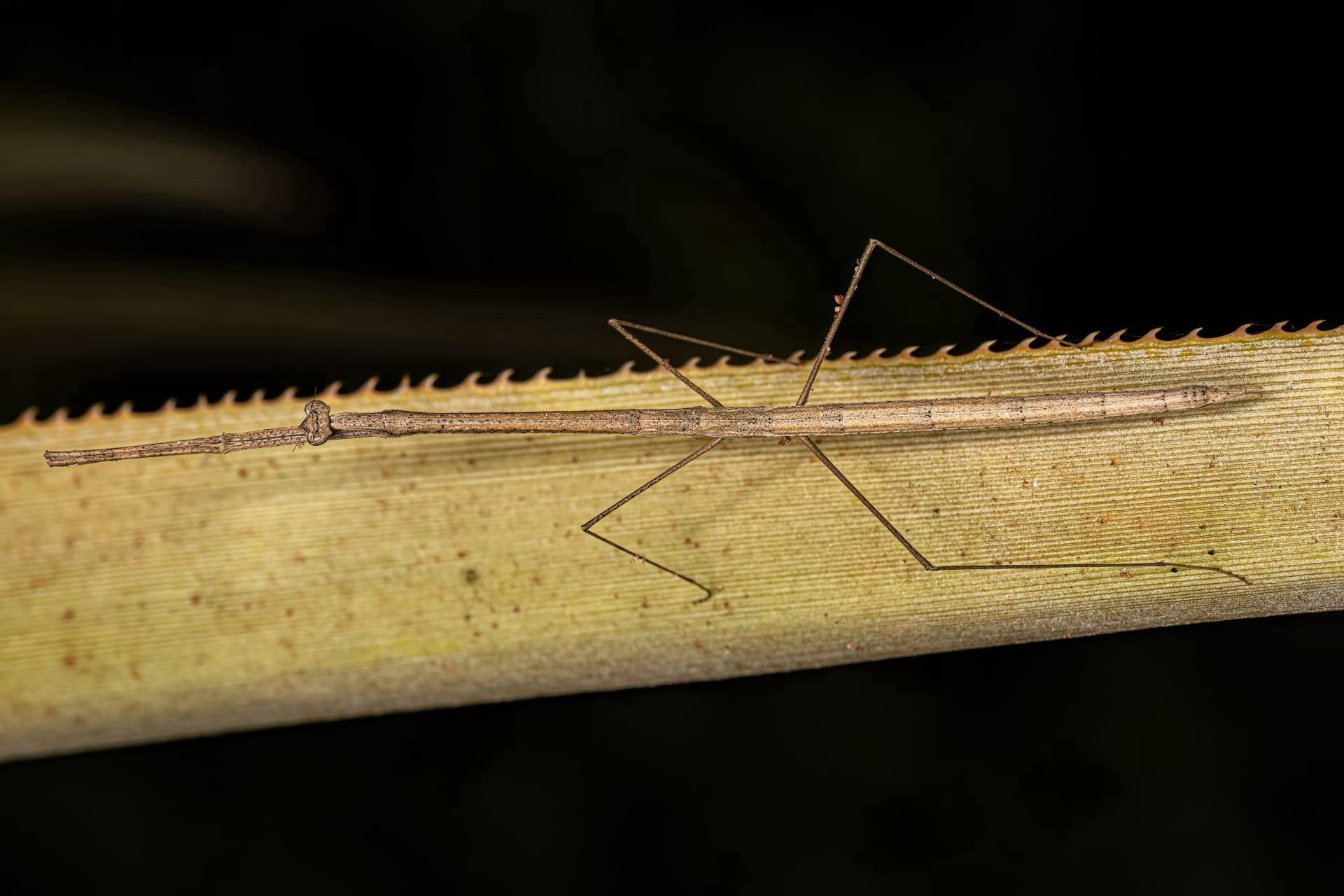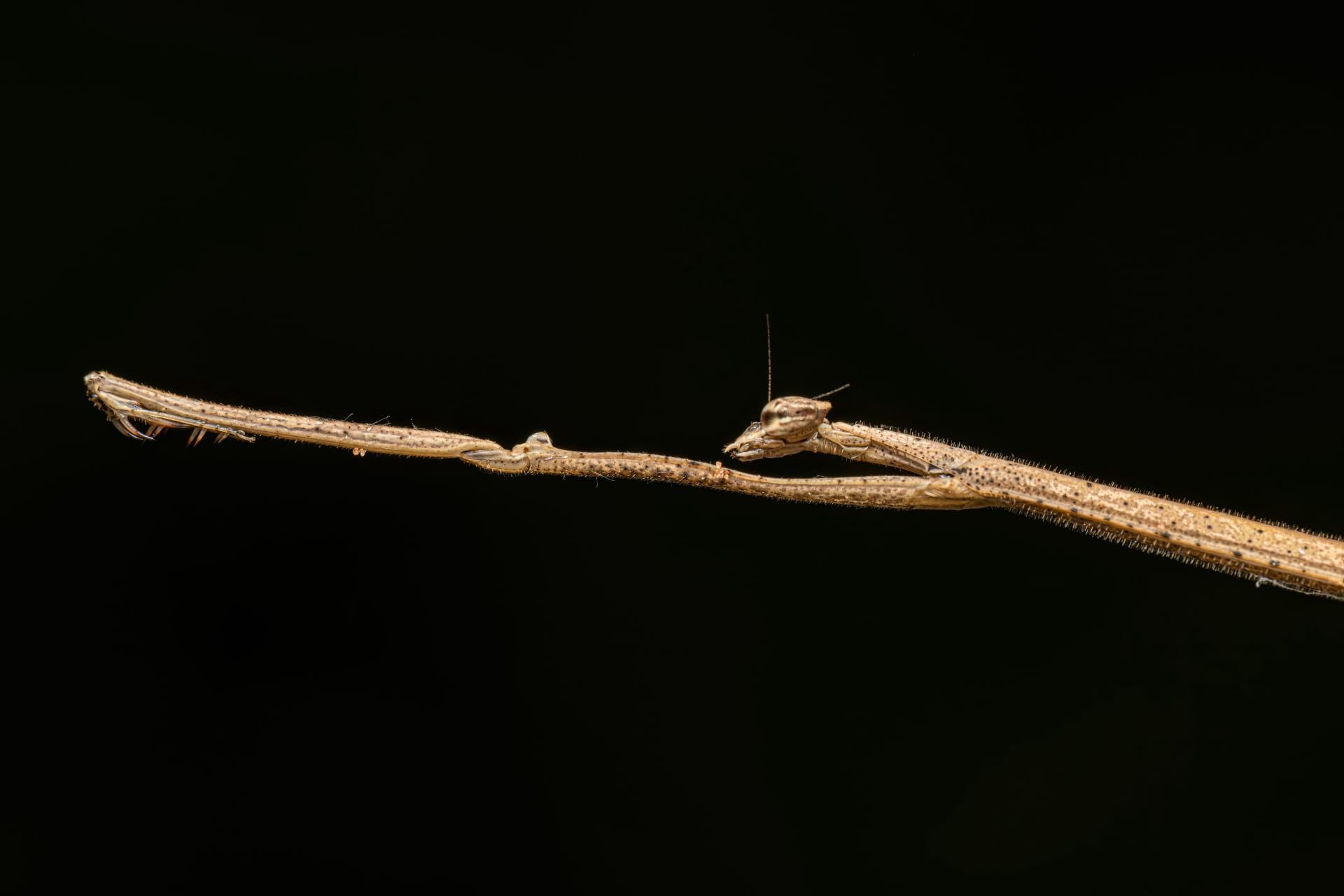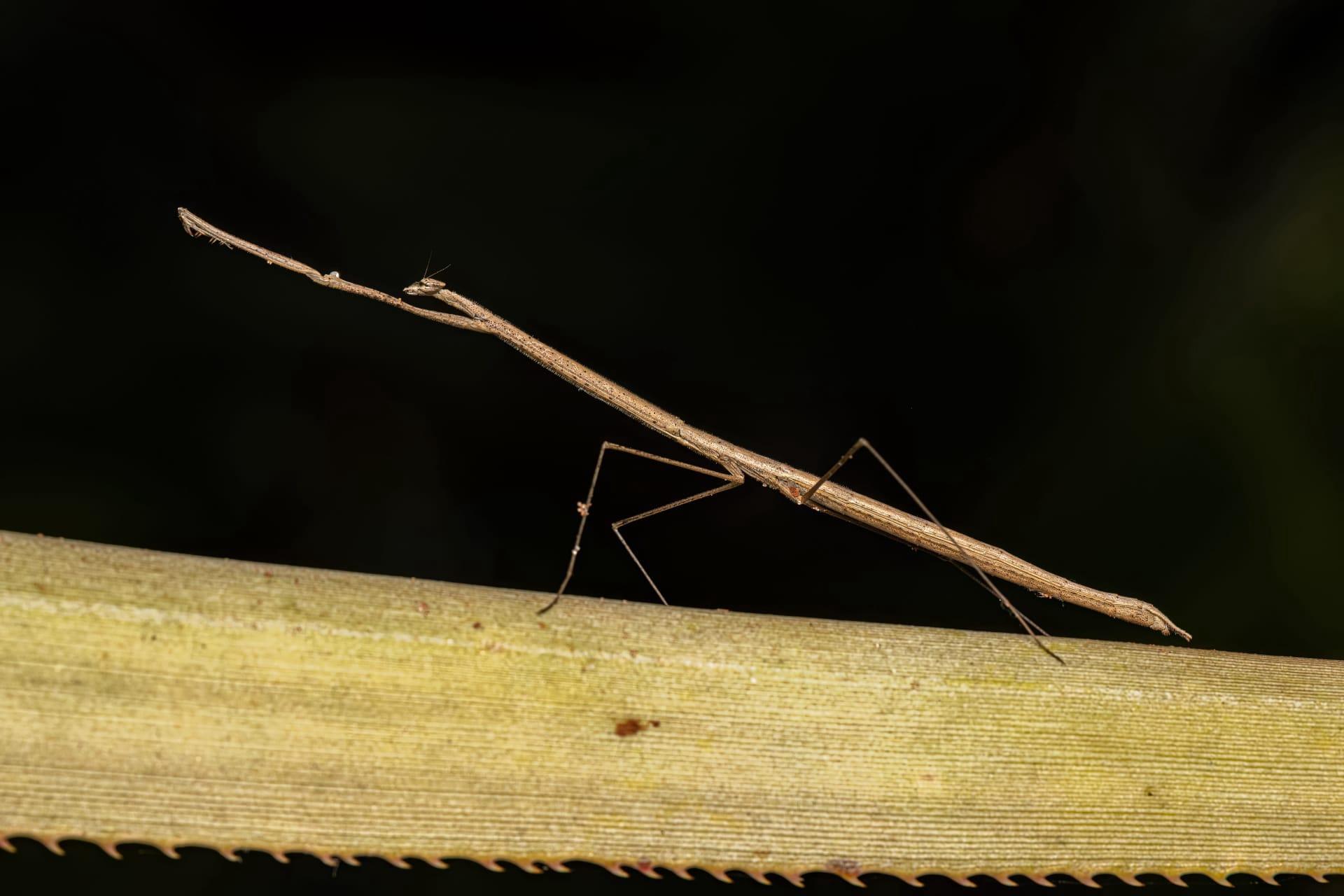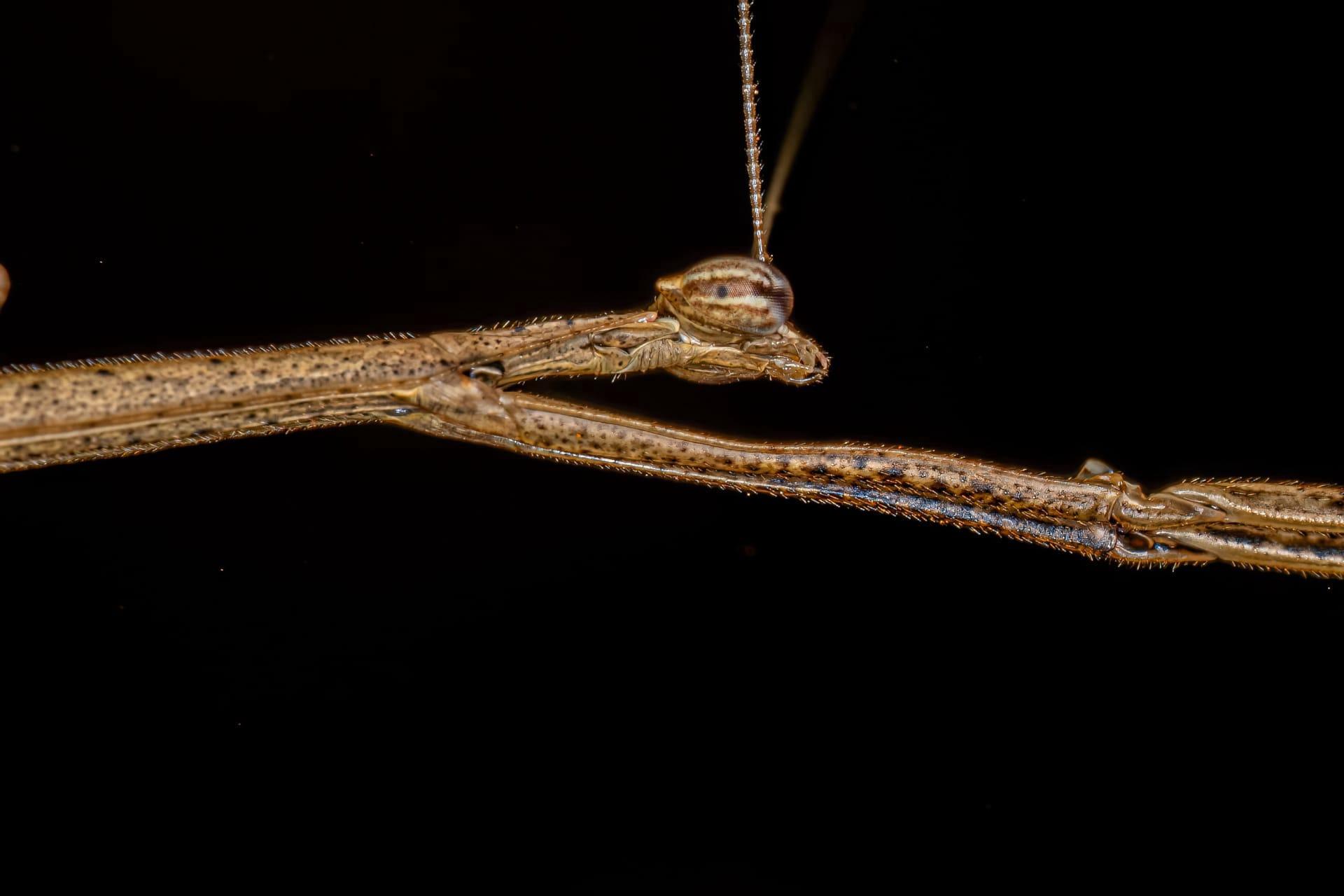1
Stick bugs, known scientifically as Phasmatodea, are masters of camouflage. This incredible adaptation helps them to avoid predators in their natural habitat. One species, the Phobaeticus chani, holds the record for being the world's longest insect, with a specimen recorded at an astonishing 22.3 inches (56.7 cm) in length. This incredible size, combined with their stick-like appearance, makes them virtually indistinguishable from actual tree branches.
Another fascinating aspect of stick bugs is their reproductive strategy. Some species, like the Timema cristinae, can reproduce asexually through a process called parthenogenesis. In this process, the females can produce offspring without any male involvement. Remarkably, this method is not just a backup plan; in some species, males are extremely rare or even completely absent. This reproductive flexibility is a key factor in the survival and proliferation of stick bug populations in various environments.

2
Stick bugs have a unique defensive mechanism against predators. When threatened, some species can emit a defensive spray that is irritating to predators. This spray contains chemicals that can be unpleasant or even temporarily blinding. For instance, the Anisomorpha buprestoides, commonly found in the southeastern United States, can shoot its spray up to 12 inches (30 cm) and has been known to deter even curious pets and humans.
Their diet is another interesting aspect. Stick bugs are primarily herbivores and have a particular fondness for the leaves of plants such as bramble and eucalyptus. What's remarkable is their ability to consume leaves that are toxic to most other animals. Their digestive system has evolved to not only tolerate these toxins but also thrive on them, allowing them to feed on a wide range of foliage that would be hazardous to other creatures.

3
One of the most intriguing behaviors of stick bugs is their movement. They perform a motion known as "catalepsy," where they sway back and forth to mimic the movement of branches in the wind. This behavior enhances their camouflage, making it even harder for predators to spot them. The precision of this mimicry is so accurate that it often fools even the keenest-eyed birds and mammals.
Stick bugs also have an unusual response to danger. When a stick bug feels threatened, some species will play dead, a tactic known as thanatosis. During this state, they stiffen their bodies and fall to the ground, resembling a broken twig. This act of deception often confuses predators long enough for the stick bug to make an escape once the danger has passed.

4
Regarding their lifespan, stick bugs have a relatively short life cycle. Most species live for about one to two years. However, this brief lifespan is marked by rapid growth. Stick bugs molt multiple times as they grow, shedding their exoskeletons to accommodate their increasing size. Each molting phase, known as an instar, sees significant changes in their appearance, progressively enhancing their resemblance to twigs and branches.
Stick bugs also exhibit remarkable regeneration abilities. If they lose a limb due to predation or an accident, they can regrow it during their next molting phase. This regenerative process is more effective in younger stick bugs, highlighting the adaptability and resilience of these creatures in their changing environments.

5
The vision of stick bugs is another area of interest. While they do not have the sharp eyesight of predators like birds or mammals, their vision is well adapted to their needs. They have compound eyes that are effective in detecting movement, which is crucial for evading predators. Their eyes are also adept at discerning different shades of green, helping them to navigate through their leafy habitats with ease.
The social behavior of stick bugs is quite variable. While many species are solitary, some exhibit social tendencies. For example, the Australian Extatosoma tiaratum is known for aggregating in groups, especially in the nymph stages. This behavior may provide benefits such as enhanced camouflage or increased awareness of predators through group vigilance. This social aspect is relatively rare in the insect world and adds another layer of complexity to the fascinating life of stick bugs.